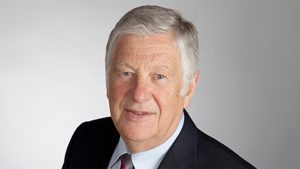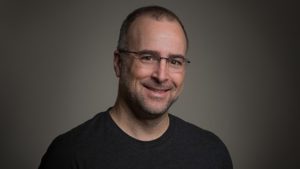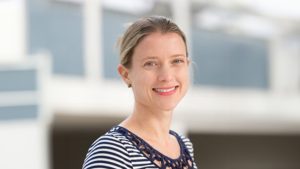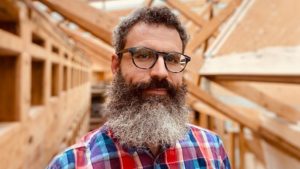The Bradshaw Research Institute for Minerals and Mining discusses its impressive research agenda that sets out to tackle the complex issues facing mining innovation.
Global consumption of raw materials is set to rise by a further 60% by 2060, having already increased fourfold since 1970, according to the United Nations.
We live in a material world and cannot avoid this reality. A new era for energy with renewable technologies and decarbonisation requires massive amounts of mining, but it also requires new mining methods to address mining’s legacy and future.
According to the International Energy Agency, the amount of metals and minerals required for each kilowatt of generation capacity has risen by 50% since 2010, and electric cars require six times more minerals than traditional combustion engines.
One wind turbine requires 4.7 tons of copper and 335 tons of steel, and to meet net-zero emissions goals until 2050, the world will need as much copper as humanity has mined since 1900.
Current mining is increasingly difficult due to the depletion of existing deposits, new locations that are environmentally and socially sensitive, increasing depths of mines, reduced grades, increasing energy and water requirements, and a short supply of relevant skilled workers.
The mining industry is facing increased scrutiny and needs new solutions that understand the interconnected problems to sustainably meet the world’s demand for metal and minerals.
A new research institute is rising to meet the challenges.
A new research legacy for mining
The Bradshaw Research Institute for Minerals and Mining (BRIMM) was founded in 2017 to create a new legacy for the mining industry.
BRIMM connects scientists, engineers, and social scientists across the University of British Columbia (UBC) to promote cross-disciplinary research spanning the entire life-cycle of mining, from early exploration to mine closure and rehabilitation.
With more than 300 years of combined expertise from its founder, Dr Peter Bradshaw, Director, Dr John Steen, and members of the Advisory Board, BRIMM has a deep network for making industry and academic connections with groundbreaking research.
Research themes
BRIMM focuses on specific research themes to address the complex variety of issues facing the mining industry.
Research themes:
1. Sustainable energy systems
2. Mining microbiome
3. Water stewardship
4. Natural capital and biodiversity
Each theme is led by leading academics who focus their team on applicable research to deliver economic, social, and environmental benefits for the mining industry.
Sustainable energy systems
Mining consumes massive amounts of energy. The entire mining industry consumes approximately 12 ExaJoules (EJ) per year or 3.5% of total final energy consumption globally, or 1961.47 million barrels of oil equivalent (MBOE).
Comminution in mineral processing alone can use up to 1% of total final energy consumption globally, equivalent to the energy consumed by 221 million typical United Kingdom homes.
The mining industry is under pressure to decarbonise its operations. Mining companies pledged to achieve net-zero emissions targets in the coming decades.
However, this commitment coincides with rising demand for minerals and metals for renewable energy technologies while costs at mining operations are increasing due to declining ore grades and deeper mines. The industry’s energy consumption is expected to rise, complicating efforts to achieve net zero emissions.
According to estimates from S&P Global Clean Energy Technology, the mining sector could use up to 180 TWh of additional clean energy from the current levels.
This research theme focuses on energy efficiency improvements, renewable power generation, energy storage, renewable-powered transportation, carbon capture, and comprehensive carbon accounting and reporting.
BRIMM’s approach emphasises a systems perspective on energy and carbon, recognising that each mine will require a customised system of technologies to achieve decarbonisation.
The mining microbiome
For 300 years, scientists viewed microorganisms as ubiquitous but harmless or disease agents to be eliminated. But, new research is revealing how these microbes could help us tackle the mining industry’s biggest challenges.
Most copper is refined through furnace smelting, which contributes to air and water pollution. However, about 20% of the world’s copper now comes from hydrometallurgy, which uses strong acids and, increasingly, bacteria that can naturally leach the red metal.
Some bacteria can convert selenium dissolved in water into a solid form, which is easier to keep out of the water cycle.
Rio Tinto has supported multiple research to find biotechnological ways to recover metals from mine-influenced water.
Some microbes can help suppress dust by binding fine sand particles together, making the air safer to breathe; others can help mining companies extract certain metals they weren’t looking for before, like rare earth elements that are essential to many green technologies.
There are an estimated nonillion prokaryotic microorganisms on Earth. This abundance surpasses the number of stars in the known universe, the number of neurons in our brains, and all of our synapses combined.
There is an entire micro-universe to explore, yet research labs have barely developed the capacity to explore and map this new frontier and understand microbes’ capabilities.
To discover and track these organisms, the Canadian government’s Digital Supercluster initiative has formed the cross-industry Mining Microbiome Analytics Platform (M-MAP). Teck, BGC Engineering, Rio Tinto, and Allonnia are participating, as well as the Centre for Excellence in Mining Innovation, Koonkie Canada, Genome BC, and UBC.
The partnership’s goal is to extract DNA from 15,000 mine site water, rock, and soil samples, sequence it, and create an online platform for storing and analysing the data.
Water stewardship
Surface and groundwater are important resources for human life and health. Mining activities have the potential to compromise the safety of these resources.
Mining consumes large quantities of water. Water is critical to every stage of the mining cycle, from exploration to production.
The copper mining industry alone withdrew over 1.3 billion m3 of water in 2006, half of the water that London, England, consumes every day.
However, the mining industry’s need for water will conflict with communities. Managing and reducing the risks associated with water usage is a top priority for mining companies and communities.
According to the World Economic Forum, a shortage of clean fresh water presents serious global, societal, and economic risks over the next decade. By 2030, the global population is expected to reach 8.5 billion and could face a water shortfall of 40%.
Using global data from the U.S. Geological Survey (USGS), at least 16% of the world’s land-based critical mineral mines, deposits, and districts are located in areas already facing high or extremely high levels of water stress.
BRIMM is in a unique position to focus on water because of the extensive expertise already present across the UBC campus. Recently, a cross-campus cluster was established, the Future Waters Research Excellence Cluster.
Natural capital and biodiversity
An individual mining company’s focus on the lowest-cost models may be missing its largest costs and opportunities.
Sustainability solutions in the mining and forest sectors are usually studied in isolation, which provides a partial picture of mining’s true impact.
Greg Paradis’s research at BRIMM strives to develop a nuanced understanding that balances higher costs against the broader benefits that those investments might offer.
Greg Paradis partnered with Newmont Mining to conduct a year-long study into nature-based decarbonisation opportunities across five Canadian mining sites.
Paradis is taking a holistic approach to carbon-capture strategy, studying not only sequestration techniques but also biodiversity, job creation, and reconciliation opportunities for First Nations communities.
His approach is a multi-dimensional analysis that weighs a wide range of factors to create high-value, low-cost solutions to help mining companies stabilise their carbon-capture portfolios and minimise the cost of their decarbonisation commitments.
Paradis hopes to create a sustainable development framework that balances effectiveness, cost, environmental impact, and social considerations.
A network for success
BRIMM consistently proves the value of its network and multiplied every dollar invested to date by at least tenfold, leveraging small amounts of funding to obtain larger grants to support its research.
In six years, BRIMM has:
• Delivered up to 10 times leverage for each invested dollar, resulting in $3.5m in additional research investments in 2023 alone,
• Funded 19 leading-edge projects based on four research themes,
• Facilitated 1,000 learners from more than 50 countries to participate in cross-disciplinary micro-certificates,
• Developed an extensive network of mining experts, including an international board of advisors, to source ground-breaking ideas and provide direction,
• Instigated three start-up companies.
An invitation to partner in mining innovation
Universities serve as hotbeds of innovation and entrepreneurship, nurturing a culture that encourages the exploration of new ideas and the creation of spin-off ventures based on cutting-edge research.
Industry collaborations with universities provide companies with access to a pool of talented people, such as researchers, scientists, and students, who can contribute new ideas, perspectives, and skills.
By partnering with universities, companies can tap into this entrepreneurial ecosystem and potentially benefit from the commercialisation of research.
Material resources are finite, but the potential for research and innovation is infinite. Contact BRIMM to work on the future of mining innovation.
Dr Peter Bradshaw

Dr Peter Bradshaw has served the mining industry with distinction for more than forty years as a mine-finder, company builder, and advocate of collaborative research and science, as well as by working effectively with local and Indigenous people.
Dr John Steen

Dr John Steen has served as the BRIMM Director since July 2020. Before that, he spent a year as the BRIMM Ambassador from the Norman B. Keevil Institute of Mining Engineering.
Ali Madiseh

Ali’s research includes the study of various mechanical and energy systems with a specific emphasis on the mining and petroleum industries.
His research team focuses on developing novel solutions for maximising energy efficiency, improving system performance, preventing energy waste, and replacing fossil fuels with renewable energies.
He focuses on geothermal, wind, and solar energy systems in mining, petroleum, and other industries and on developing new waste heat recovery and energy storage systems.
The goal is to use an integrated and interdisciplinary approach to help industries improve their processes, cut their operating costs, and reduce their environmental footprint.
Steve Hallam

Steven Hallam is a University of California Santa Cruz and MIT-trained molecular biologist, microbial ecologist, entrepreneur, and innovator.
With over 20 years of experience in field and laboratory research and innovation at disciplinary interfaces, Hallam is an Associate Professor in the Department of Microbiology and Immunology at the University of British Columbia, Canada, Research Chair in Environmental Genomics and Canadian Institute for Advanced Research Scholar in integrated microbial biodiversity, a programme dedicated to studying the molecular, morphological and community complexity of the microbial world.
Nadja Kunz

Nadja Kunz is an Assistant Professor and Canada Research Chair in Mine Water Management and Stewardship, jointly appointed by the School of Public Policy and Global Affairs and the Norman B Keevil Institute of Mining Engineering at UBC.
Nadja’s research goal is to quantify and mitigate the risks associated with the mining sector’s use of water from the perspective of diverse actors, including companies, investors, governments, Indigenous rights-holders, and communities.
Nadja adopts an interdisciplinary toolkit, ranging from the development of engineering and geospatial models to anticipate potential water-related risks to qualitative field and interview research to identify the constraints and opportunities for transitioning the mining sector towards more sustainable water and waste management practices.
Gregory Paradis

Gregory Paradis is an Assistant Professor of Forest Management in the Department of Forest Resources Management (Faculty of Forestry) at the University of British Columbia (UBC).
He uses a systems approach to modelling interactions between ecosystems, industrial supply chains, governments, and society. His research interests lie at the intersection of forest science, forest economics, forest and industrial engineering, data science, computer science, and operations research.
He obtained his PhD in Forest Science at Université Laval, where he also spent a year as a Postdoctoral Research Fellow. He has a B.Sc. Eng. Forest Engineering and an M.Sc. Forest Engineering from the University of New Brunswick.
Please note, this article will also appear in the 18th edition of our quarterly publication.









